Tile is an art that began in the 15th century, when Christian potters adopted an old technique from Islamic art (the zuleiq ), and which will continue uninterruptedly throughout the centuries. We have traveled the World Tile City to discover historical panels full of unique stories, walls lined with contemporary art, centuries-old shops where you can buy precious glazed ceramic tiles. If you are one of those who thinks that the tile is old and boring, we are going to show you how wrong you are.
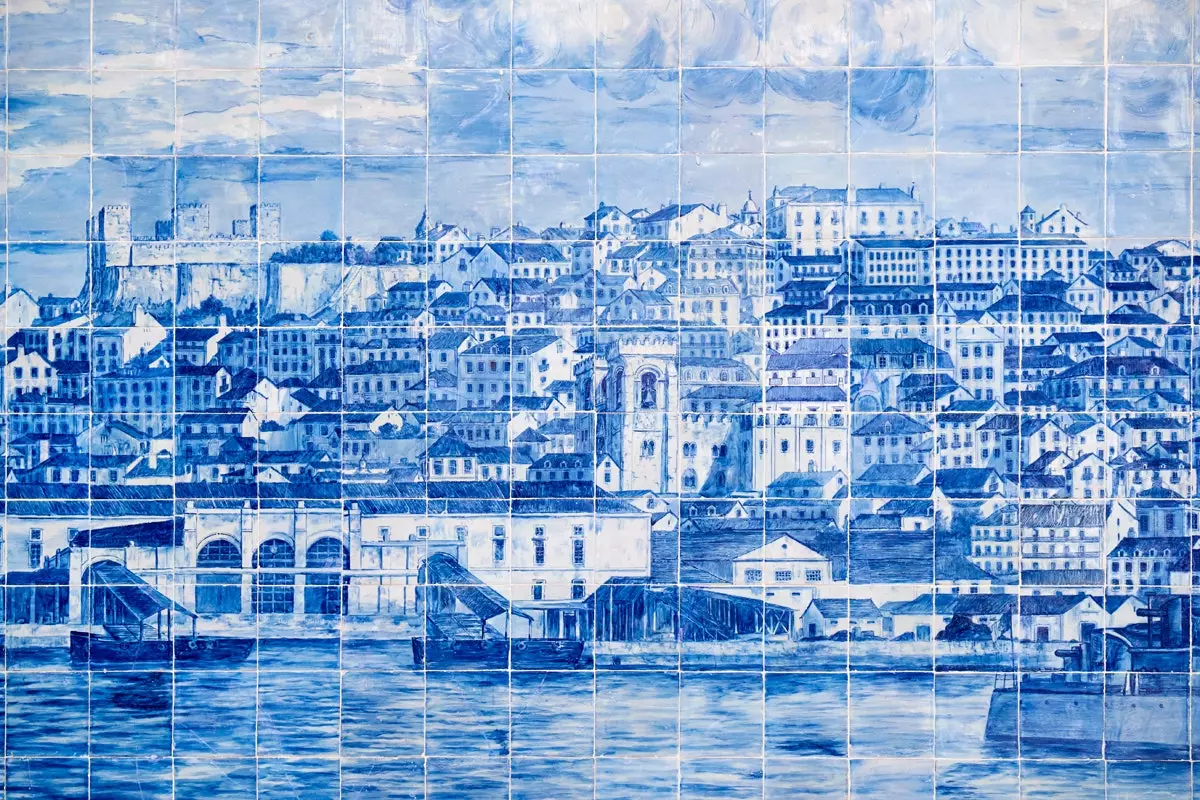
A stunning blue tile mural.
1. A FIRST RETROSPECTIVE: THE TILE MUSEUM
I confess, a dedicated visit to a museum full of tiles did not sound very seductive. But in the precious 15th century building I that houses the Museu Nacional do Azulejo de Lisboa I was fascinated by the magnificent collection that illustrates the history of tile art and its various influences: Arabic, Flemish, Spanish, Dutch and even from the Asian continent.
Through beautiful rooms and cloisters with arcades we discover religious scenes, everyday life, geometric motifs, works by contemporary artists... that reflect how centuries-old art has managed to evolve by adapting to the new times. In the museum it is also explained the tile making process and can be viewed in an area reserved for artisans restoring old pieces , since one of the objectives of this institution is the conservation of the tile heritage of the city.
A plus: the museum has a more than correct restaurant with a terrace decorated, of course, with tiles that represent various scenes related to gastronomic pleasures.
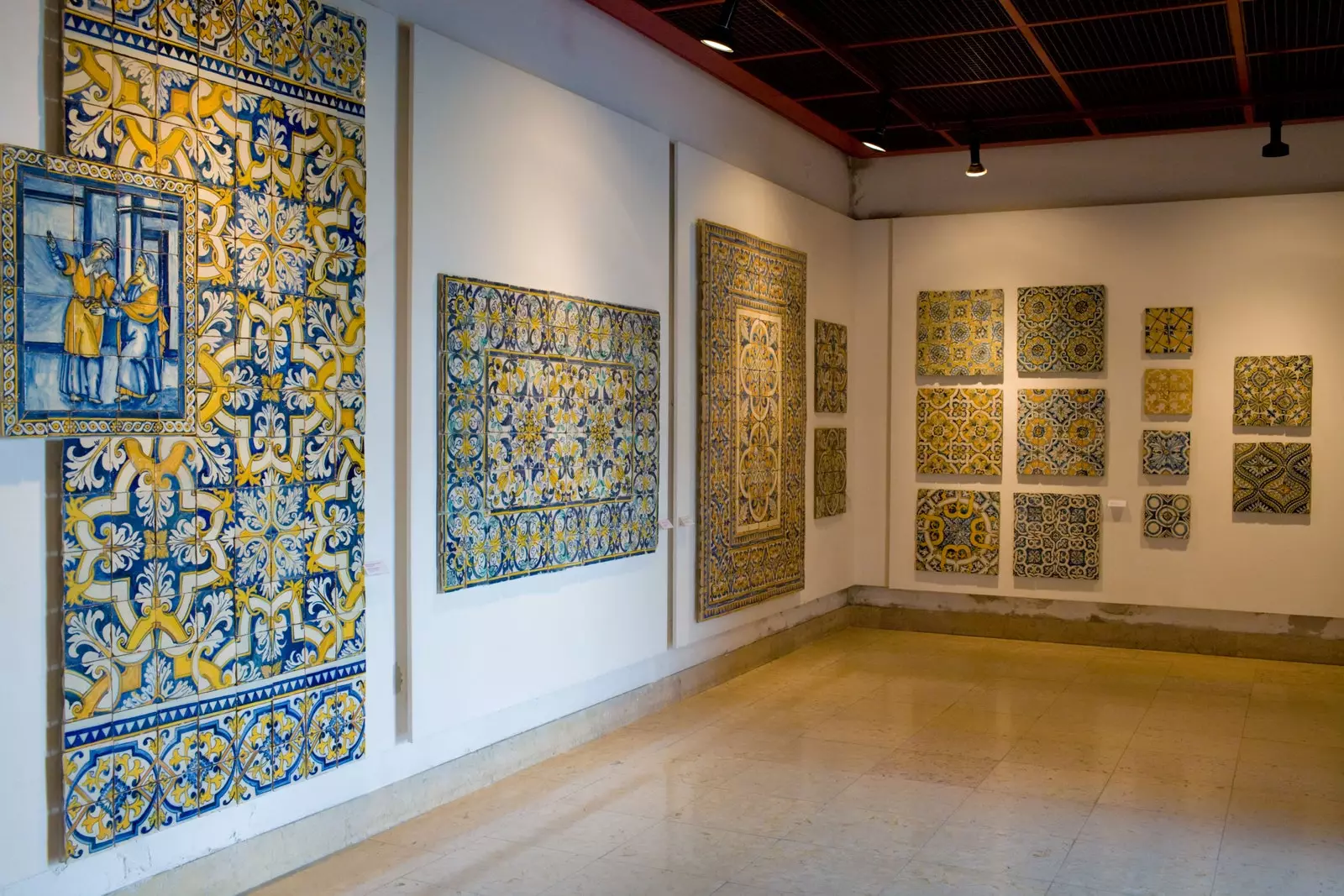
National Tile Museum of Lisbon.
two. ALFAMA NEIGHBORHOOD: THE NEIGHBORHOOD TILE
We dive into Alfama , the most traditional neighborhood in Lisbon, whose nooks and crannies will lead us through houses whose hallways are covered with tiles, protector saints tiles , and squares in which the garlands are combined with ceramics of yellow and reddish tones leaving us typically Lisbon prints.
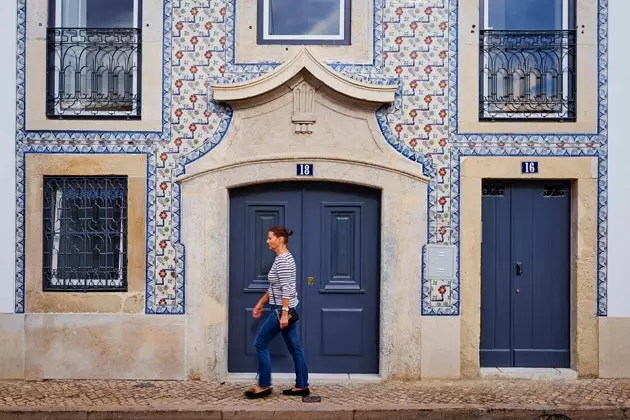
Alfama.
The “feminist” tiles of the Palacio Belmonte
And in Alfama we find precisely the Belmonte Palace , which belonged to Álvaro Cabral, the conqueror of Brazil and is now a fantastic boutique hotel with only ten rooms frequented by celebrities such as Jeremy Irons.
In the main room we discover nothing more and nothing less than 30,000 18th century tiles spread over 59 panels , the work of two great masters of Portuguese tilework. The tiles fell over the years and were placed in the wrong way, in such a way that it took more than 2 years to rebuild them correctly. One of the panels was left in the state in which it was found to show the visitor the neatness of the task.
The artist Mariana Mendoca , who together with her husband Frederic Coustols manages the place, shows us the Governor's Room and a "feminist" panel from the 17th century, a true rarity: a lady of the time sitting provocatively and smoking a cigar . Unfortunately, the palace can no longer be visited, although some of the farewell messages from visitors can still be read on its website.
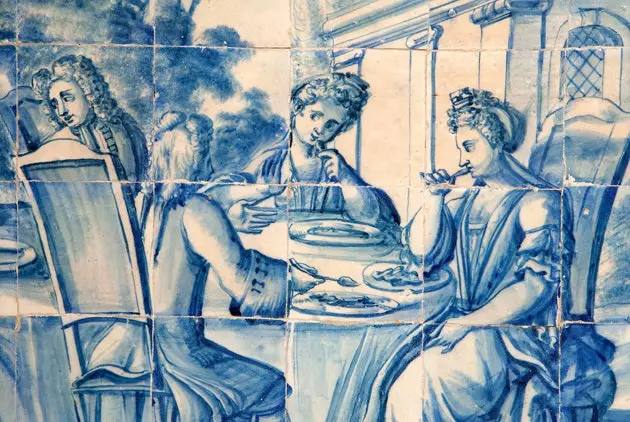
Azulejos inside the Palacio Belmonte.
3. THE MOST PHOTOGRAPHED TILES IN LISBON
In the heart of Chiado , on the Rua da Trindade 28-34 , we find the one that is probably the Lisbon's most photographed tiled building . Made in 1863, this panel of yellow and orange tiles, Ferreira das Tabuletas, It represents various mythological images: Earth, Water, Science, etc. At the top, a star with an eye in the center symbolizes the creator of the Universe.
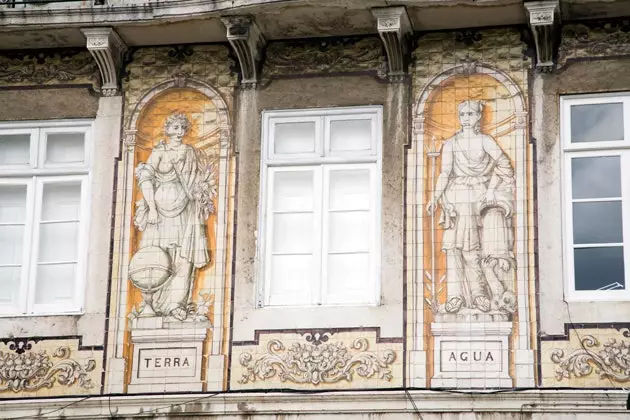
Ferreira das Tabuletas.
Four. TILES WITH A VIEW
The viewpoints, those dazzling windows of the city, are also a perfect showcase where you can admire some of the most beautiful tiles in Lisbon.
In the Santa Luzia viewpoint , we find one of the most beautiful corners of the city, where colorful bougainvillea and chipped tile walls perfectly synthesize the decadent beauty of the Portuguese capital . Behind the viewpoint is the Church of Santa Lucía, which suffered extensive damage in the 1755 earthquake. However, one of its greatest jewels remains intact: the panel of tiles (made by the traditional Fábrica de Cerâmica da Viúva Lamego) in which is represented Plaza del Comercio with the appearance prior to the 1755 earthquake.
At the San Pedro de Alcántara viewpoint we witness an overdose of views of Lisbon. To make our task easier, we find a gigantic panel that indicates each of the monuments that can be seen from the place.
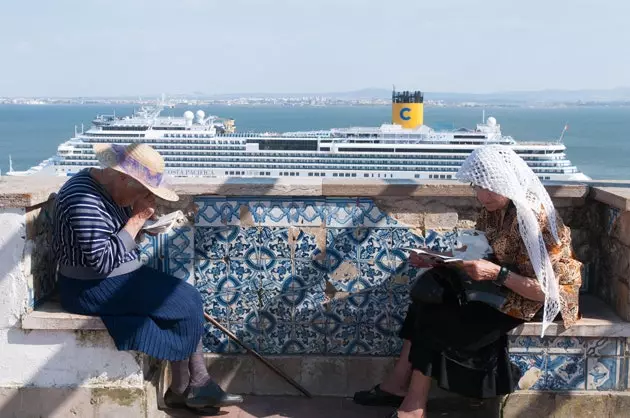
Santa Luzia viewpoint.
5. THE TILES YOU DON'T EXPECT
When the white and cobalt blue tiles start to settle strongly on your head, it's time to hop on the modern Lisbon metro red line (inaugurated in 1998 on the occasion of the Universal Exposition that was held in the city) and changing the third: new plastic expressions and surprising styles far removed from traditional representations. Who said tile couldn't be creative?
We have traveled the line vermelha And this is what surprised us the most:
the east station
Eleven artists representing the five continents were invited to represent the central theme of Expo 98: the oceans . the icelandic error deals with a story of myths and legends in the key of comics that shows us that the art of tile has no limits.
Saldanha
Phrases of poems and romances of Almada Negreiros cover the walls of what is, without a doubt, the most literary station in the Lisbon metropolitan area.
Cape Ruivo
Puzzling motifs of prehistoric art by the plastic artist David deAlmeida surprise us in a unique setting.
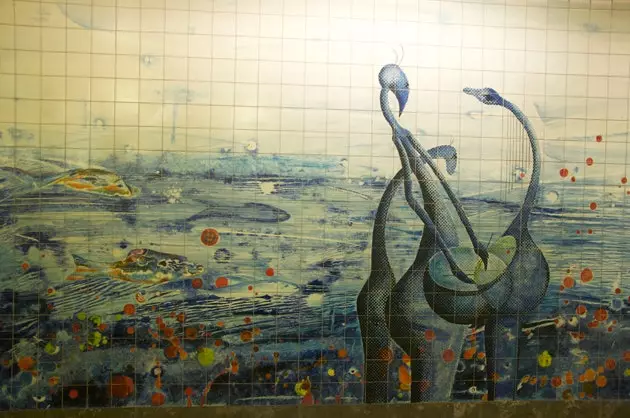
East Subway.
6. THE MOST BEAUTIFUL TILES? LENGTH OF THE INTENDENT
Viúva Lamego Ceramic Factory
The building that currently houses the exhibition of Viuva Lamego , a historical Portuguese tile brand, is undoubtedly one of the most beautiful in the city. The 1865 tiles they contain images of Asian motifs in clear allusion to the Portuguese trade with this continent.
Right in the adjoining building is the A Vida Portuguesa store that contains a marvelous centennial tile panel.
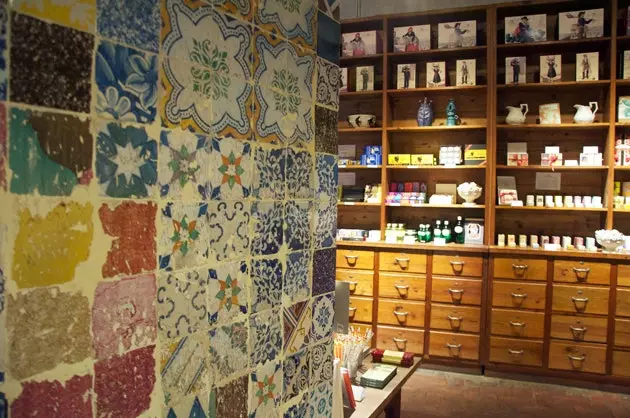
To Portuguese Life.
7. PANELS OF INFANTE SANTO AVENUE (OR HOW TILE TRANSFORMS URBANISM)
One of the main arteries of the city, chaotic in terms of traffic and with uninteresting buildings from an architectural point of view, however, it surprises us with a succession of panels upholstered in colorful tiles. Crossing this avenue by car is always linked to the spectacle of the famous tiles that, depending on the light of day, take on different shades.
It highlights, among others, the set of deep blue tones called “O mar” by the plastic artist Maria Keil . The color explosion of the ceramic panel will not leave you indifferent either. Edward Ner and at the exit of the tunnel.
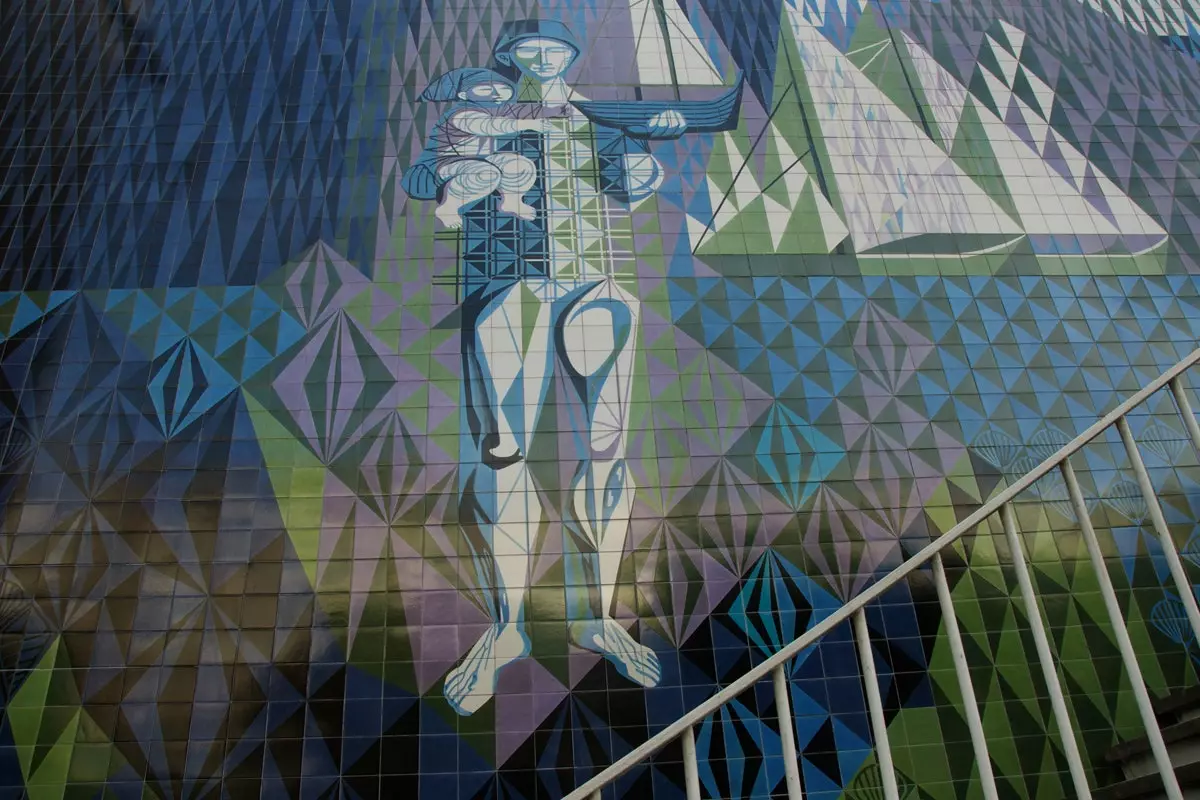
'O Mar' in Infante Santo.
8. AND NOW, TAKE A TILE HOME
If after so much tiles you have decided that you can no longer live without them, we have the solution: SANT'ANNA, a house of craftsmen who have been making tiles entirely by hand since 1741 following traditional methods dating back to the 18th century. The tiles that cover your shop from the Rua do Alecrim 95 they are over 100 years old. If you are interested in learning more about the process of making tiles at the SANT'ANNA factory located in the Ajuda area, they will welcome you. (Calçada da Boa-Hora 96).
If they tempt you old tiles We strongly ask you not to buy in the Popular Barks Fair , where old pieces that come from the looting of Lisbon's heritage are sold.
Finally, we recommend the book of tile itineraries recently published by Zest publishing house, Azulejo in Lisbon (in English, French and Portuguese) the first of its kind that will help you easily discover the impressive ceramic heritage of the city of the seven hills.
